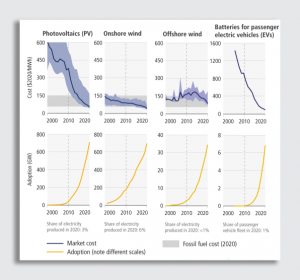There’s a real art to writing web copy that converts, especially when working within the tight parameters of Google AdWords. Finding the right phrasing when limited to just 25 characters for the headline and 70 for the body text is a skill that even finest wordsmiths can find a challenge.
However, marketers are increasingly turning to the scientific approach of trial and error, running rotating versions of the same ad in order to analyse which one performs better over time. Making the most of Google’s A/B testing enables a greater understanding of consumer behaviour, which should in turn lead to higher click-through rates (CTRs) and conversions.
Here are 5 routes to Split Testing success:
- Headline act
Result pages are fiercely competitive and headlines are the first (sometimes only) thing that people notice, so it’s crucial to get them right. Experimenting with different titles is a quick way to see if you’re on the right track, and a good starting point is to alternate between headlines that incorporate different keywords.
There are many schools of thought on what makes a great PPC headline, so taking time to try things out will put you in good stead when it comes to maximising sales.

- Ring the changes
When rotating two versions of the same ad, there’s little point in making minor alterations to the odd word here and there; you’ll get little clarity on what works, and it’s entirely possible that you won’t notice much difference at all. For more informed results, you should make the Headline, Description Lines 1 and 2, and the Display URL as different from each other as possible.
However, it’s important to always ensure that the Destination URL remains the same, as sending each ad to a different landing page will make tracking conversion rates more difficult.
- Multivariate
Somewhat conversely to the point above, if you have the budget to test several variations, you can play around with each individual component, forming 16 separate ads to see which combination of Headline, Description Lines and Display URL performs best. This strategic approach will allow you to pinpoint success, but it does require more time and attention, and critics would argue that rotating so many variations wouldn’t yield very thorough analytics for each.

- Marginal gains
The theory of ‘marginal gains’ came into prominence in 2012, with the British cycling team winning their first ever Tour de France and a host of Olympic gold medals. The coaching staff had set out to improve every aspect of training and preparation by a single percentage, knowing that the combined effect could have a dramatic impact on results. Many businesses have since adopted this philosophy, and your PPC campaign can be strengthened by continually editing the worst performing ad until it performs better, potentially overtaking the leading ad.
- Time is money
The default settings mean that Google will automatically favour the best performing ad after three months, which is great if you want to save time and makes perfect sense when thinking about the bottom line. However, if you plan to experiment for longer and want to obtain more detailed analysis, you can choose to ‘rotate indefinitely’.
Whichever route you take, split testing your campaigns is a surefire way of improving sales figures, and that’s what PPC is all about. Using this feature in conjunction with other recent updates, such as AdWords Customer Match, should achieve more clicks and, ultimately, boost your bottom line.
Digital & Social Articles on Business 2 Community(74)






